Peru's Turbulent Politics and Economic Reliance on Copper Mining
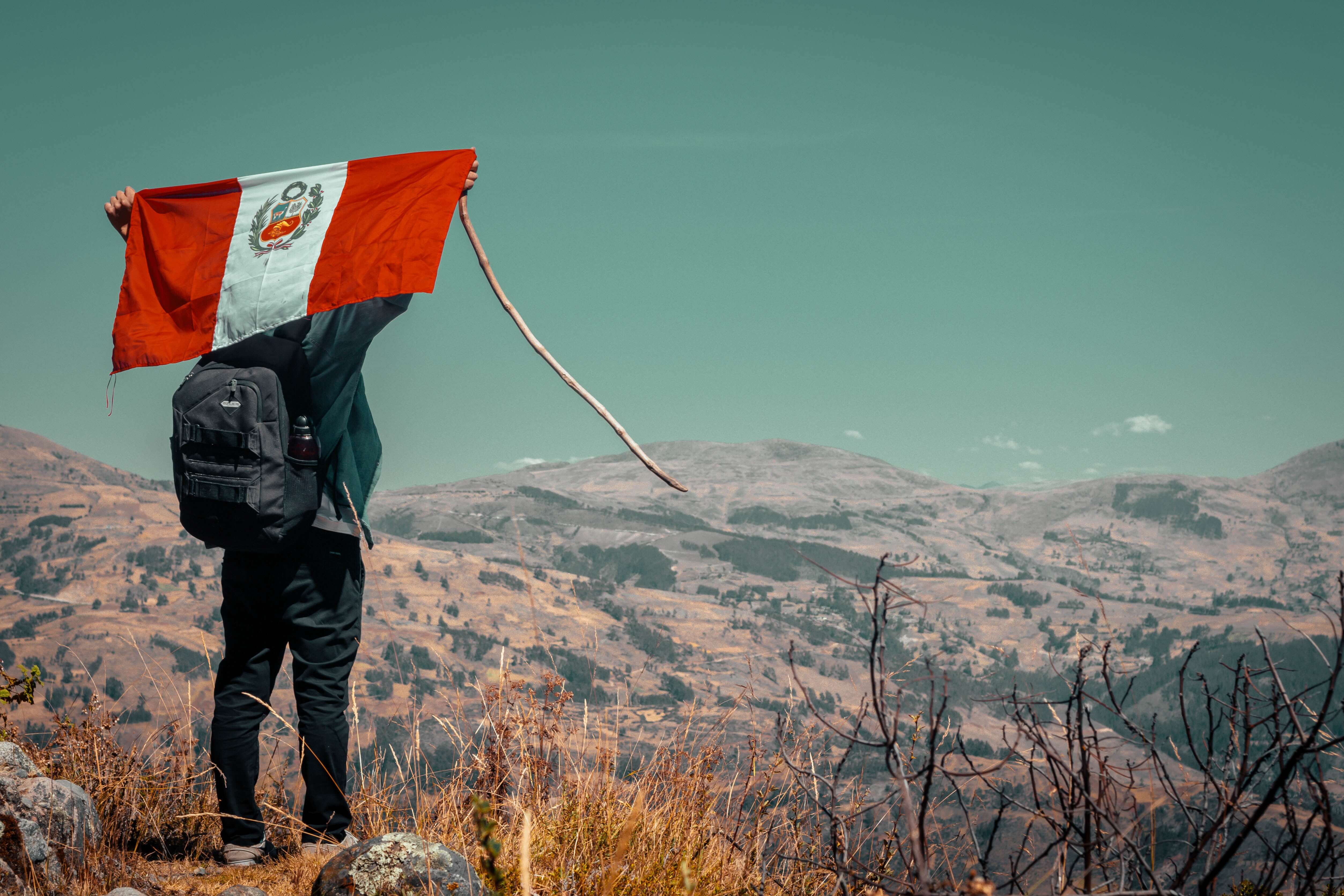
Peru's economy relies heavily on copper mining, but political instability and unrest have disrupted production. The article explores Peru's turbulent politics, protests, and need for mining investment amid calls for stability.
- Peru's economy is fueled by natural resource exports, especially mining of copper, silver, zinc and gold. Mining comprises a major part of GDP and exports.
- Peru has experienced strong economic growth and poverty reduction in recent decades but continues to face political instability.
- President Pedro Castillo was impeached and removed from office in December 2022 after attempting to dissolve Congress.
- Castillo's removal sparked nationwide protests demanding his release and the resignation of his successor President Dina Boluarte.
- The protests disrupted travel, commerce and mining operations, highlighting Peru's deep social and political divides.
- Peru produces 10% of the world's copper but sliding investment due to political uncertainty threatens future copper production.
- The government is trying to revive mining investment by easing regulations and affirming commitment to order amid calls for political stability.
- Addressing protesters' grievances and advancing elections could help reassure investors worried about instability.
Peru's Strong Economic Growth from Mining and Energy Exports
Peru, a nation of 33.4 million, possesses a diverse and growing economy fueled by its abundance of natural resources. Its coastal regions, Andean highlands, and Amazonian tropical forests confer rich deposits of minerals and excellent fisheries.
Mining dominates Peru's economy, comprising 8.5% of GDP and 63.9% of exports. In 2021, mining exports reached approximately $40 billion. Substantial investment in recent decades has expanded exploration and development activities.
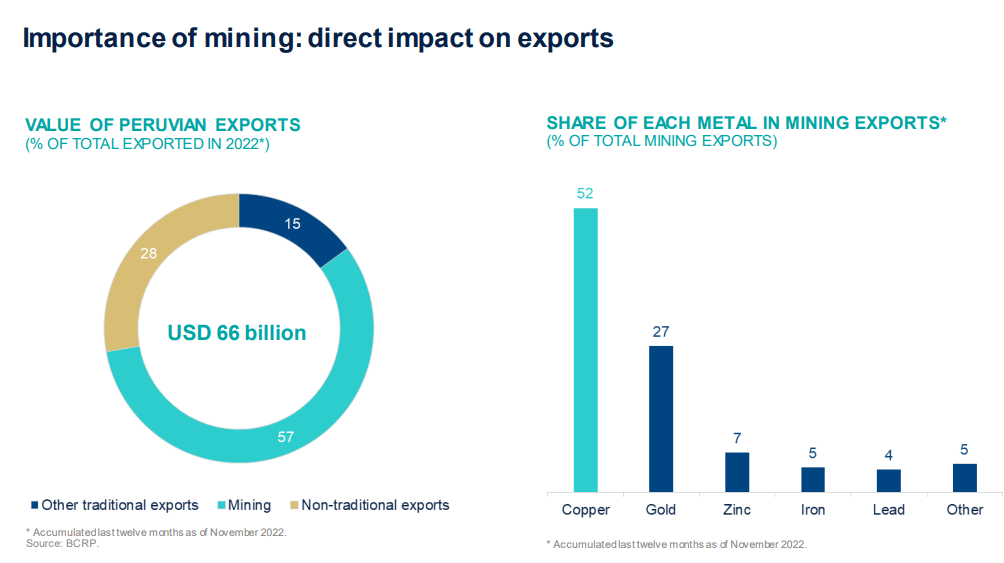
In recent years, Peru has made strides in economic and social development. GDP has expanded rapidly, external debt has fallen, inflation is low and the exchange rate stable. Poverty has declined from 58.7% in 2004 to 25.9% in 2021, and extreme poverty from 17.1% to 4.1%.
Peru's economy has enjoyed stability since the 1990s. In 2021, GDP grew 13.6%, one of the highest rates in Latin America. Growth continued in 2022, reaching 2.9%, boosted by exports and supportive policies. In 2023, Peru's economy is forecast to expand around 2.9% again.
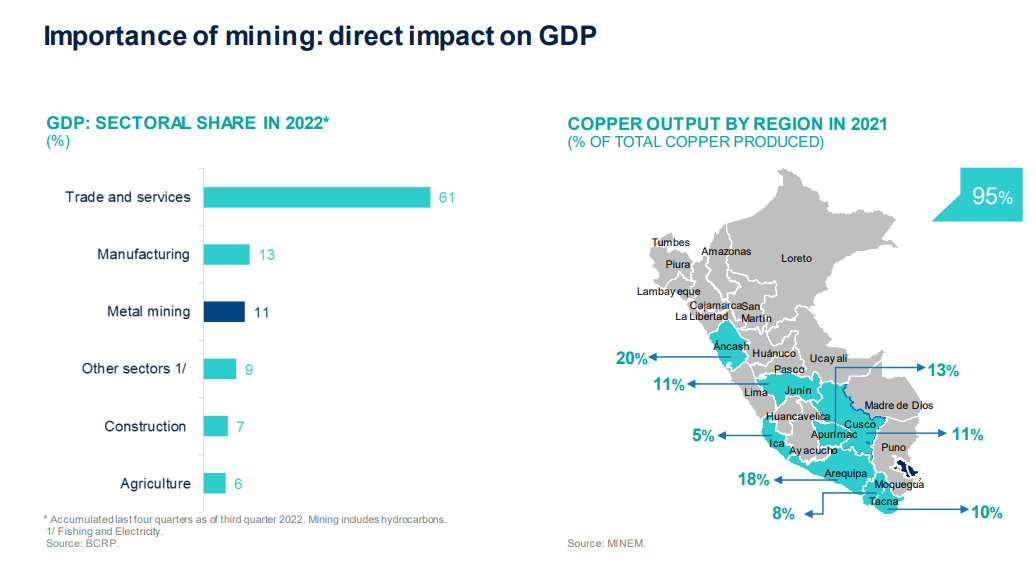
Peru is a top global producer of copper, silver, zinc, and gold. Copper is especially critical - Peru produced 2.2 million metric tons in 2022, making it the world's second largest copper producer. The country is home to four of the twenty biggest copper mines on earth. Silver, zinc, gold, and other metals are mined extensively as well. Peru's mineral riches will likely continue driving its economy for years to come, providing jobs and overseas earnings.
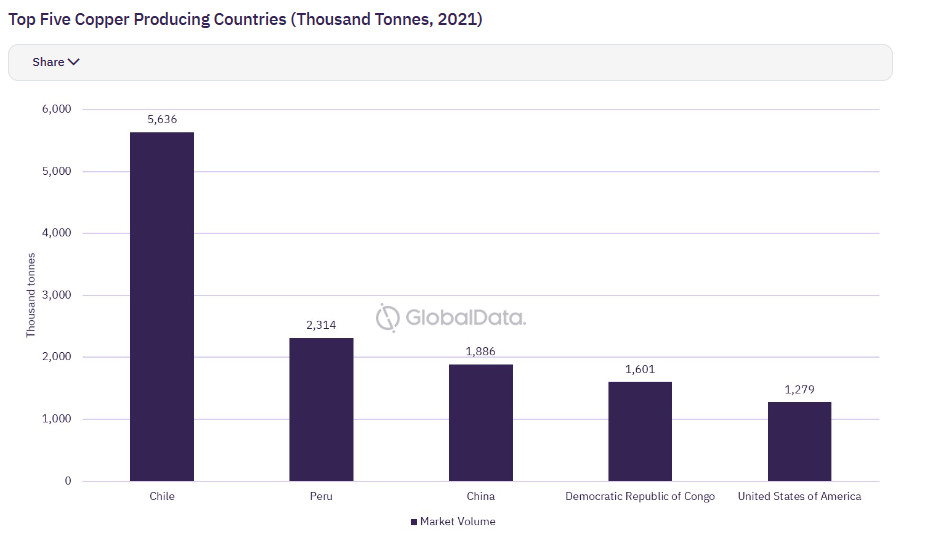
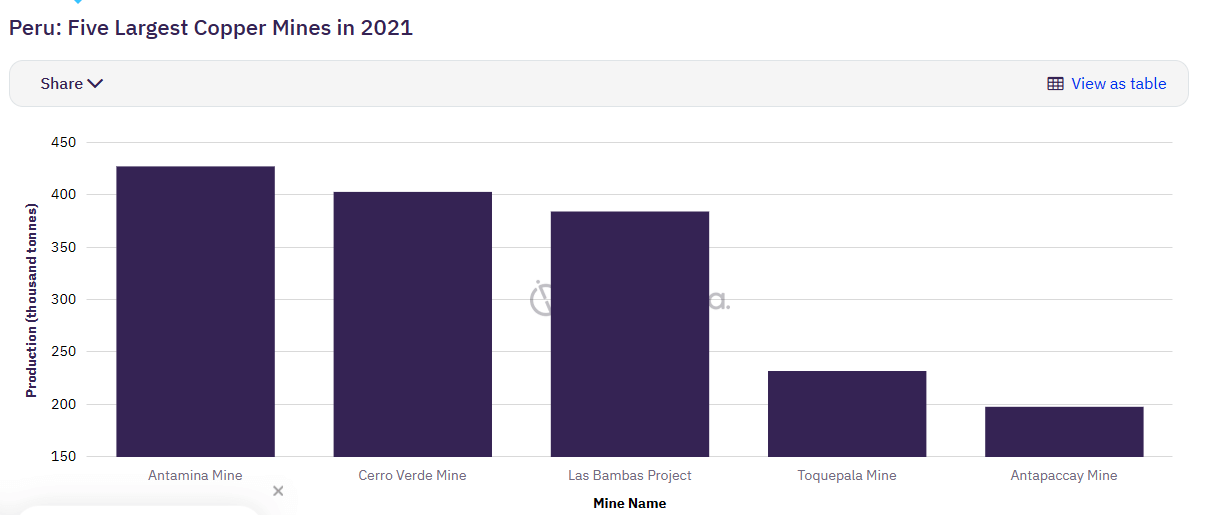
Turbulent Political History amid the Thriving Copper Industry
Peru, the world's second largest copper producer, has faced political instability for decades despite being one of Latin America's fastest growing economies. In December 2022, Peru's Congress voted to remove President Pedro Castillo in his third impeachment trial since taking office in July 2021. This followed Castillo's attempt earlier that day to dissolve Congress by decree.
Castillo, a former teacher and farmer, won election with strong support from poor rural areas. However, the socialist president quickly lost popularity and faced constant opposition from a fragmented Congress and accusations of incompetence. He survived two prior impeachment votes before finally being removed on December 7, 2022 after his aborted attempt to dissolve the legislature.
Peru has seen a pattern of presidents ousted from office or jailed on corruption charges over the past 30 years. Castillo is the third president in a row taken down by Congress amid turmoil and allegations of corruption, following the paths of Pedro Pablo Kuczynski and Martin Vizcarra before him. Despite its economic growth, Peru has been plagued by political instability stemming from tensions between the executive and legislative branches.
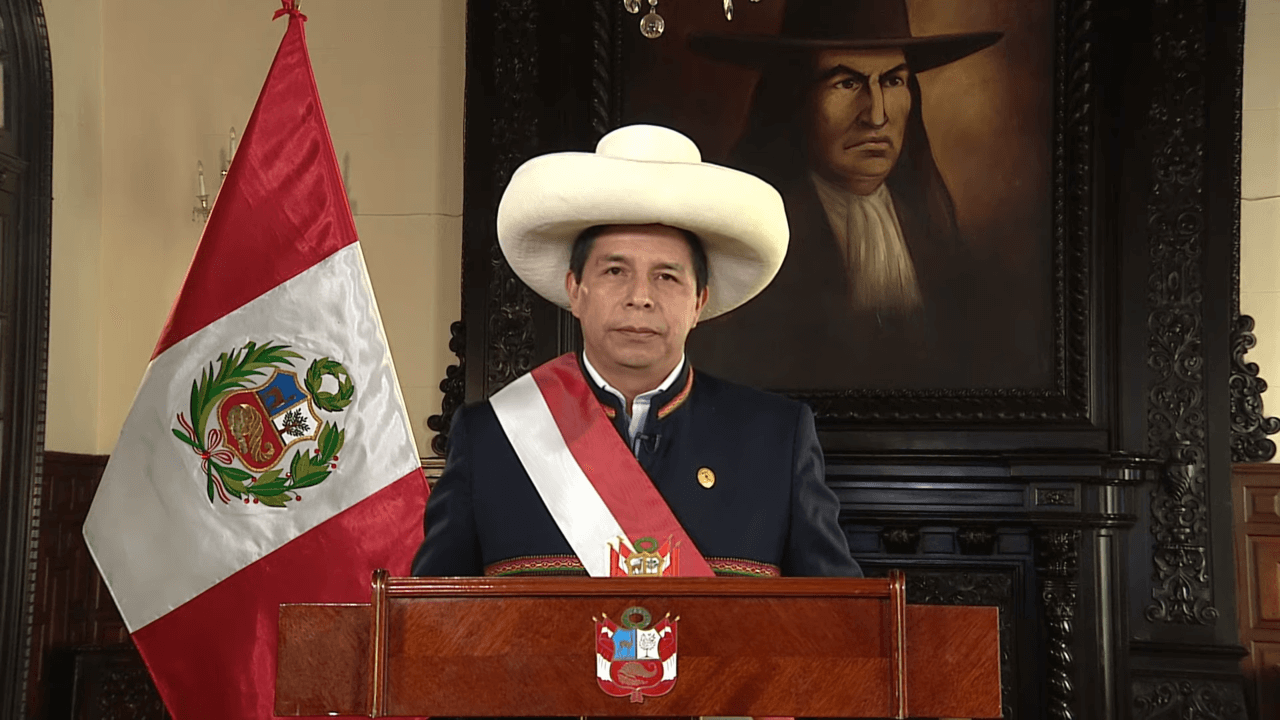
Peru Declared State of Emergency Amid Nationwide Protests Over Political Turmoil
The government of Peru declared a nationwide state of emergency on December 14th, 2022, after a week of escalating protests over the controversial impeachment and arrest of former President Pedro Castillo. The emergency order grants expanded powers to the police and restricts civil liberties such as the right to protest.
Struggle for Stability After Coup and Unrest
Weeks of unrest gripped Peru following the chaotic removal of President Pedro Castillo in December 2022. His ouster ignited long-simmering grievances, especially among marginalized groups who felt unrepresented by Peru's political establishment.
Castillo’s arrest sparked immediate backlash. Protests erupted demanding his release and the resignation of his successor, President Dina Boluarte. What began as outrage over Castillo's removal has since evolved into a wider movement decrying generations of inequality and lack of investment in Peru's rural regions.
The turmoil reflects Peru's history of political volatility and social divisions. Despite economic growth in recent decades, many Peruvians still lack access to healthcare, education and other basic services. The pandemic exacerbated these inequities. Castillo channelled the frustrations of underserved communities, but his presidency brought more instability amid constant clashes with Congress.
The ongoing demonstrations turned violent, with clashes between protesters and police leaving dozens dead and hundreds injured. Protesters blocked roads and forced the closure of airports and mines, disrupting travel and commerce. Calls have grown for immediate elections, but Congress recently blocked proposals to hold snap polls in 2023. Polls indicate strong support for rewriting Peru's constitution, but Congress also rejected that idea.
With no clear path toward elections or political reform, Peru's crisis continued unabated. The stalemate highlights the deep divides within Peruvian society and the inability of the political system to channel popular demands for change. Unless a compromise can be forged, the turmoil seems poised to persist.
Peru's Copper Supply and Potential Constitutional Changes
Peru's vital copper mining industry, which provides 10% of the global supply, has persevered through the recent unrest. However, the lingering possibility of roadblocks and other disruptions has led to increased copper prices. With surging global demand for renewable resources like copper, which is indispensable for the transition from fossil fuels, shortages are expected through 2030. But demonstrations have periodically blocked access to mines, forcing shutdowns that spiked copper prices overnight. While the height of protests in January saw many roadblocks, their number has since declined and activity has rebounded. Still, if Congress refuses to approve new elections, protests could swell again and curtail production. In one instance in February, demonstrators occupied a major silver mine in Buenaventura, halting operations. The risk of future disruptions looms, evidenced by renewed blockades of Las Bambas, one of the world's biggest copper mines. As turmoil chokes exports, the effects ripple across Peru and beyond, given the country supplies 60% of exports from mining. If the repressive conditions galvanize support for a constituent assembly to rewrite the constitution, new rules could emerge regarding Peru's management of its natural resources. A new constitution may adopt a less business-friendly stance.
Revitalizing Peru's Mining Investment amid Calls for Political Stability
Peru is looking to move beyond the chaos of prolonged protests earlier this year in order to reinvigorate flagging mining investment, the lifeblood of the world's second largest copper producing nation.
At a mining conference in Arequipa in September, Prime Minister Alberto Otarola sought to ease concerns over political instability and disruptive protests that have led to an anticipated 18% decline in mining investment this year.
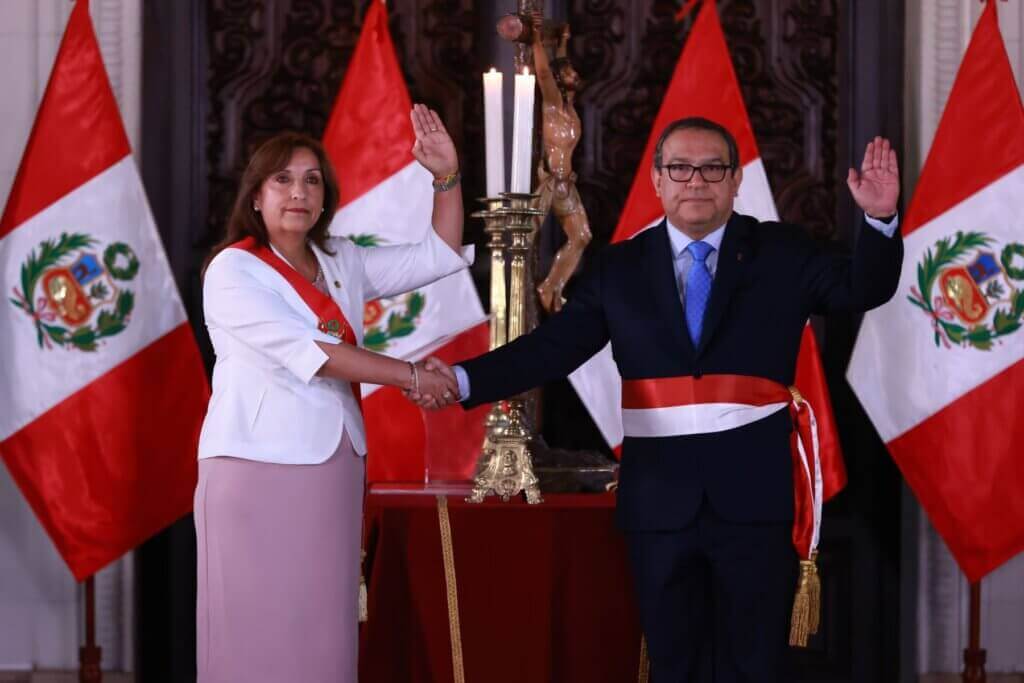
"We will not allow the country to descend into chaos, disorder and insecurity," Otarola told hundreds of mining executives, adding that the government was also working to streamline environmental permitting regulations.
Although stability had improved since major nationwide protests early this year, weak governance persisted alongside unclear regulations and red tape around issues like contractor use and environmental permits, hindering new investment.
While copper output rebounded in 2022, sliding investment in the protest-prone country – which has cycled through six presidents in five years – jeopardized production and the broader economy. Raúl Jacob, VP of finance at Southern Copper, Peru's third largest copper miner cited uncertainty around a law limiting contractor use, which he said the government should repeal.
"There is concern because there is not much clarity about the new government's direction,"
At the conference, the mining minister pointed to nine new projects approved this year, though all are expansions or medium-sized. No major investments have been made since Anglo American's $5 billion Quellaveco mine started operations last year, helping to maintain output.
Victor Gobitz, president of Antamina, Peru's largest copper mine, said political volatility mainly deters investment in new "greenfield" projects. Approving expansions faster and improving community relations could help, he said.
"At the institutional level we have not grown at the same speed, with the level of political maturity," Gobitz told Reuters, citing Peru's "fragmented political system."
Peru's Mining Projects
Victor Gobitz proposes focusing efforts on brownfield projects since there are no new operational deposits in the country. Gobitz said the lack of greenfield projects is partly due to long wait times for exploration and environmental permits, difficulties reaching agreements with local communities for land access, and poor road, port and electric infrastructure in the country.
"Brownfield projects are located within the footprint of existing mining operations, already have environmental impact studies, use less industrial water, and can be implemented in two to three years. Developing just 10% of these projects would be equivalent to a new mine," Gobitz said.
He noted some major brownfield projects underway in Peru are Chinalco's $815 million Toromocho expansion, Southern Copper's $871 million Cuajone expansion, Glencore's $590 million Coroccohuayco integration, Antamina's $1.6 billion repositioning, and Newmont's $2.5 billion Yanacocha Sulfuros.
For greenfield projects, Southern Copper's long-delayed $1.4 billion Tía María seems most advanced with its environmental license and construction permit. Its development could also kickstart the Paltitute dam to provide fresh water to Tambo Valley communities year-round.
"Peru needs fresh investment to generate more jobs, taxes and economic growth. Due to the Tía María mining project stoppage, our country lost $800 million in exports, considering its annual 100,000+ tonne copper production and metal prices over $8,000 per tonne," Gobitz estimated.
Peru's Path to Clean Energy Investment through Political Stability
The ongoing political turmoil in Peru is inextricably linked to investors' wariness about putting money into the country. It is clear that Peru needs political solutions to address its economic woes. The Boluarte government must take concrete steps to resolve the demands of protesters, who are tied to the private sector's perception of political instability. The administration has failed to take responsibility for protester deaths and walked back its initial offer to hold early elections. To defuse tensions, the government could commit to advancing elections to 2024, allowing Peruvians to elect new leadership with greater legitimacy. Renewed politics could reassure investors about the country's direction.
Additionally, the Boluarte government should make efforts to bridge divisions, especially with citizens in southern Peru. Outreach campaigns and ministerial visits to affected regions could validate protesters' concerns. Advancing major public works projects like the South Peru Gas Pipeline could signal a reconciliation effort and help broaden Boluarte's narrow support base. Demonstrating a willingness to address grievances in the south could convey political stability to investors.
With its wealth of natural resources, Peru has enormous potential to capitalize on economic trends and participate in global climate solutions through energy transition and rainforest conservation. However, political weaknesses must be addressed first for Peru to attract investment like its neighbors Chile, Brazil and Colombia. Renewed politics and social reconciliation are key to unlocking Peru's economic promise.
The political unrest in Peru presents challenges for companies operating in the country. There is a possibility that the planned general election will be brought forward from 2026 to April, 2024. This would see new leadership and renewed politics which would reassure investors about the country's direction. Crux Investor aims to speak with mining stakeholders in Peru to get their perspectives on how the political uncertainty is affecting their businesses. We will provide updates and analysis on Professional Peru Analysis, News & Education | Crux Investor, so bookmark the page to stay informed on this evolving situation in Peru's mining sector. A recent Crux Investor article outlines the importance of mining in Peru and is worth a read.
Analyst's Notes




Subscribe to Our Channel
Stay Informed











